Summarizing vs Paraphrasing: What is the Difference Between?
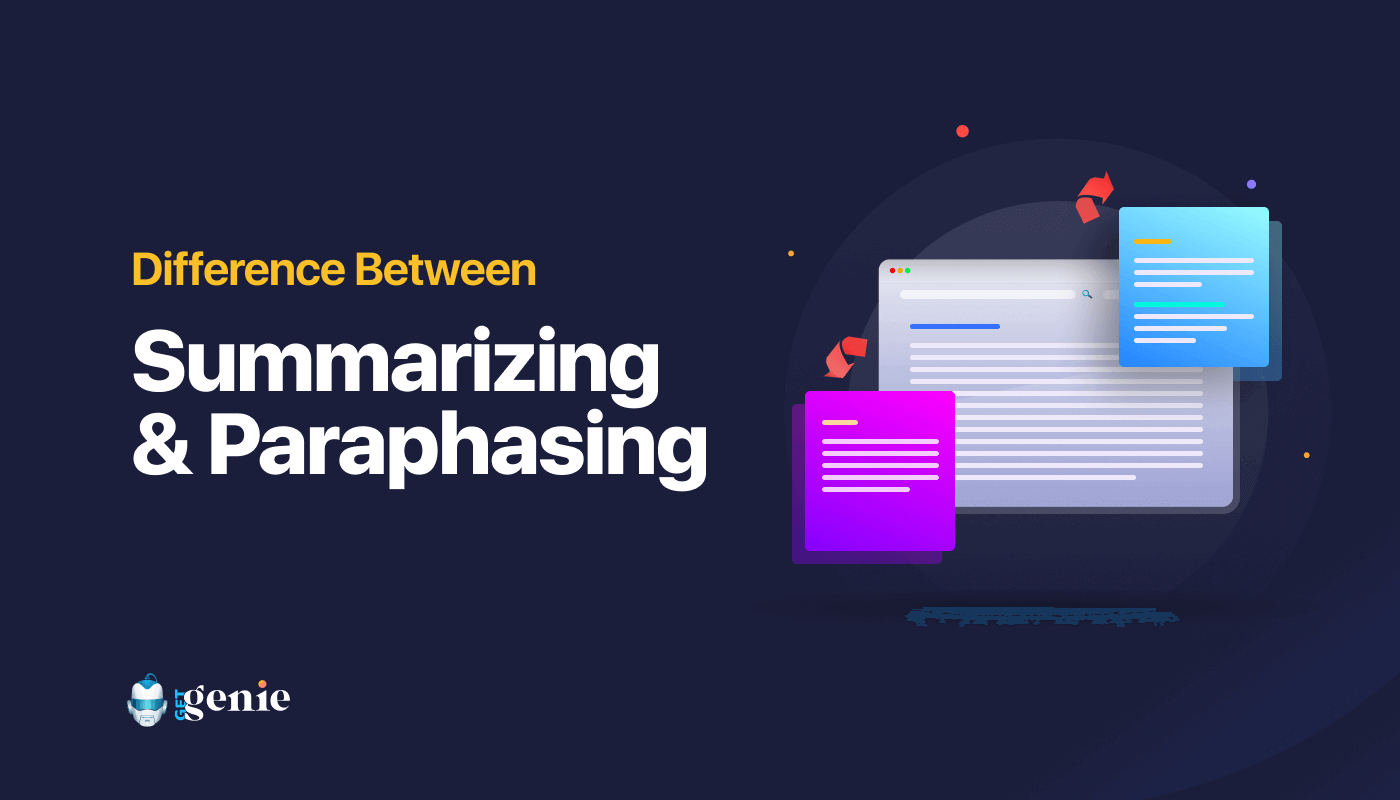
Paraphrasing and summarizing both deal with rewriting a piece of content. However, these two are not the same, in fact, there are quite a several differences.
Whether you are a student who writes academic papers or a professional writer who writes informative pieces of content, having a clear understanding of the difference between summarizing and paraphrasing is important.
I have prepared this blog to highlight the key points of summarizing vs paraphrasing so you can form a clear concept of these 2 forms of writing.
What is Summarizing?
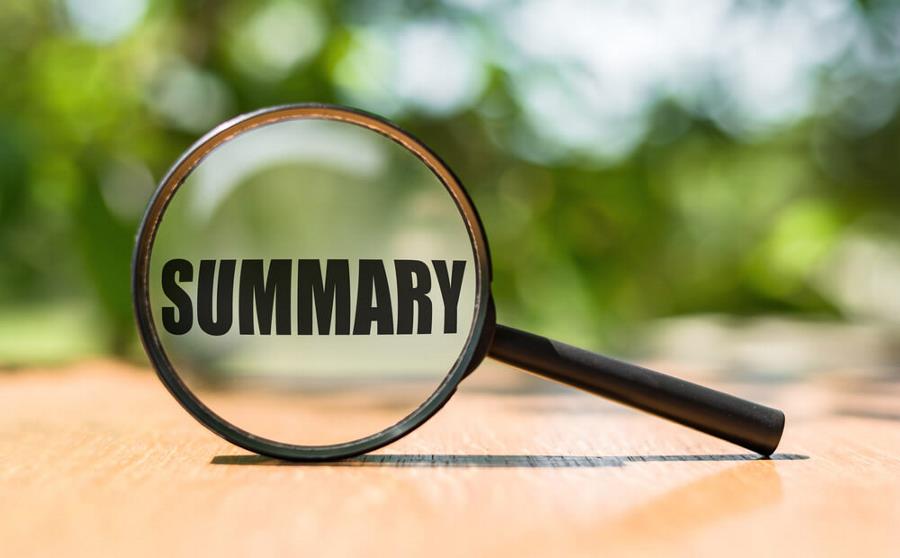
Summarizing mean as the practice of condensing a text into shorter version while retaining its main idea. Its main goal is to extract the essential points and present them in a concise manner. Though short in length, a summary ensures that users can understand the main ideas of the write-up.
Here are the key characteristics of summarizing:
Shorter than the original: A summary reduces the text to its core ideas.
Focuses on main points: It excludes minor details and supporting examples.
Uses different wording: A summary must be written in your own words while preserving the meaning of the original text.
Here is a perfect example of summarization:
Original Text: “The late 18th century saw the start of the Industrial Revolution, which turned rural economies into industrial superpowers. Urbanization, major changes in labor conditions, and technological developments all characterized this transition.”
Summary: “The Industrial Revolution transformed societies by introducing technology, urbanization, and labor changes.”
When you should summarize:
Summarizing can be useful in order to :
- Give a succinct introduction to a subject.
- Communicate the essence of a long or complicated material in a succinct, effective, and easy-to-understand manner.
- Highlight the key points in any document, speech, or presentation.
- Make a convenient resource for future use.
- Shorten the time required to read something
What advantages does summarizing have?
Summarizing is a popular practice for many reasons. With the aid of a summary,
- You can quickly and simply get the gist of a book without losing context.
- Pinpoint key ideas.
- Provide pertinent information.
- Identify any knowledge gaps.
👉👉 How to Use an AI Summary Generator for Article to Write Summary
What is Paraphrasing?
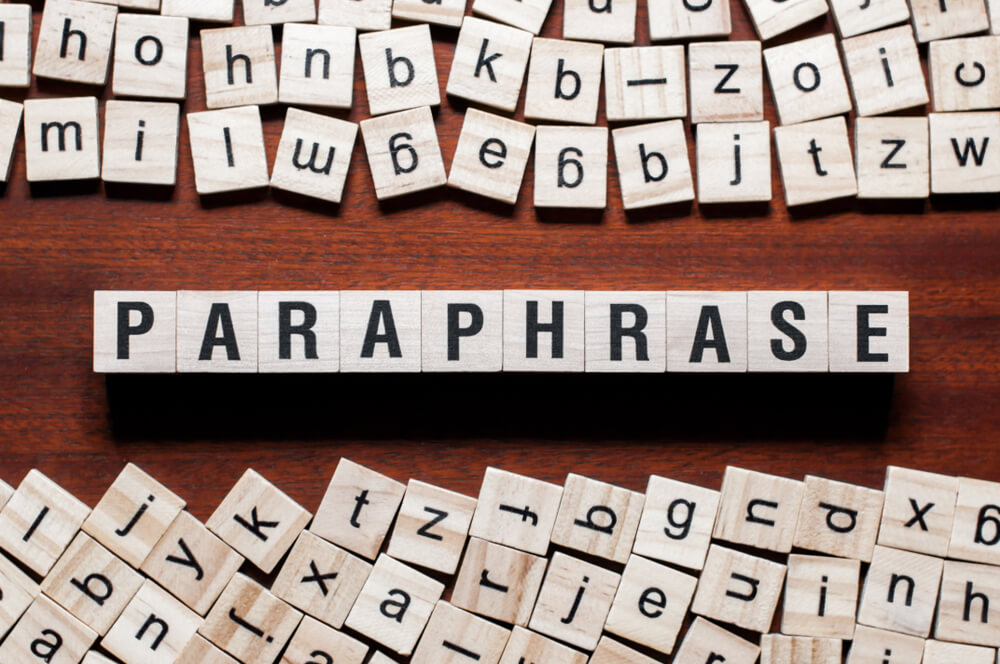
Rewriting or paraphrasing a text in your own words while preserving the original meaning and message is known as paraphrasing. Paraphrasing aims to provide original content that conveys the main ideas of the original text.
Here are the characteristics of paraphrasing:
- Same length as the original or slightly shorter.
- Preserves all details: Unlike summarizing, paraphrasing includes all information but in a new way.
- Rewritten in your own words: A good paraphrase does not copy phrases from the original but expresses the same ideas differently.
Here’s a good example of paraphrasing:
Original Text: “The Industrial Revolution led to rapid urbanization as people moved from rural areas to cities in search of jobs in factories.”
Paraphrase: “As a result of the Industrial Revolution, many individuals left rural regions and relocated to urban centers to find employment in manufacturing industries.”
When you should paraphrase:
It’s helpful to paraphrase when you need to:
- Cite and use details from a different source.
- Clarify a lengthy, intricate, or challenging passage
- Your article might use some flare or be presented in a more interesting way.
- Specifically state or present a different angle on a subject that has already been said
- Want to increase the content’s quality
What advantages can paraphrase offer?
By paraphrasing you can elevate your content as you can:
- have a better grasp of the source material
- explain the original text’s meaning to others
- come up with new ideas on how to approach the subject
- develop your writing style,
- and of course, avoid plagiarism.
👉👉 Best Copywriting Frameworks for Better Conversions
Summarizing and Paraphrasing: A Quick Overview
The table below shows some key points that differentiate summarizing and paraphrasing.
| Parameters | Summarizing | Paraphrasing |
|---|---|---|
| Definition | Summarizing means condensing | Paraphrasing is rewriting |
| Focus | Main points only | Entire idea in own words |
| Purpose | To condense information | To restate for better understanding |
| Information | Can add additional thoughts and views along with key points | No fixed length. Usually somewhat the same length of the original text. |
| Length | Usually shorter in length | No fixed length. Usually somewhat the same length as the original text. |
| Advantage | Effective way to convey the main idea | Develop a deeper comprehension of a subject |
| Content Production Time | An effective way to convey the main idea | An effective way to convey the main idea |
Paraphrasing vs Summarizing [Their Difference]
Although they are sometimes used interchangeably, summarizing and paraphrasing are two independent writing processes with separate purposes.
So, how is summarizing different from paraphrasing? Let’s examine the primary distinctions between summarizing vs paraphrasing:
Meaning and Definition
Simply put, summarizing is “condensing,” while paraphrasing is “rewriting.” The goal of paraphrasing is to rephrase the original text in a distinctive manner without distorting the original text’s meaning.
Summarizing, on the other hand, conveys the key concepts from a written work in a condensed and clear manner.
Additional Details
While paraphrasing, you should feel free to add your own thoughts, views, examples, perspectives, and key points to the finished product.
Only the essential information should be included in a summary, with little interpretation or personal opinion.
Length

Length is a vital difference between summarizing and paraphrasing. A paraphrase doesn’t have to be a certain length. It may be slightly shorter, similar in length, or slightly longer than the original text (if you offer insights and instances).
A summary, on the other hand, is a condensed version of the original material and is much shorter than it.
Benefits

The development of critical thinking skills, deeper comprehension of a subject, and perspective-taking are all aided by paraphrasing.
Summarizing is seen to be a more effective technique to convey the main idea of the text to the audience.
Content Production Time

Last but not least difference between paraphrasing and summarizing is the producing time. Summarizing can be done more quickly than paraphrasing because the writer only needs to concentrate on the most important details.
And that’s it! Now, you know the difference between summarizing and paraphrasing.
Common Mistakes and How to Avoid Them
Mistakes in Summarizing
- Being too vague
- Including unnecessary details
- Using the same wording
Top tips to ace summarizing
Here are some suggestions to help you make the most of the process when you’re ready to summarize:
- Read the text several times to make sure you comprehend it.
- Think of the big picture and main ideas
- Group the main concepts together by looking for links between them. Remove extraneous information.
- Make an outline and arrange the data in a sensible sequence.
- Save time by merely summarizing what needs to be spoken.
- Check the summary’s accuracy, brevity, and clarity.
Mistakes in Paraphrasing
- Changing the meaning
- Keeping too much original phrasing
- Overcomplicating the language
Top tips to ace paraphrasing
It’s crucial to paraphrase in a manner that is distinct from the source text while still being illustrative and truthful. Here are some pointers to help you begin paraphrasing correctly:
- Read the source material carefully, then
- Write in your own words before editing for impact.
- Add your own interpretation and thoughts to the material.
- Employ a plagiarism detector
Tools for Effective Summarizing and Paraphrasing
Now, here’s the best part. Summarizing and paraphrasing are undeniably hard if you do it manually. Thanks to AI! The job can easily be done in a few seconds.
If you are looking for a tool you can use for easy summarization, Quilbot is a good option. Why?
- Quilbot allows users to adjust the length of summaries.
- Offers an option to choose between paragraphs, bullets, and custom.
- It has a user-friendly interface ideal for both techy and non-techy individuals.
Here’s how it works:
➡️ Using this sample essay, go to Quilbot summarizer and enter the essay.
➡️ Select the format (Paragraph, Bullet, Custom). In this demonstration, select Bullet format.
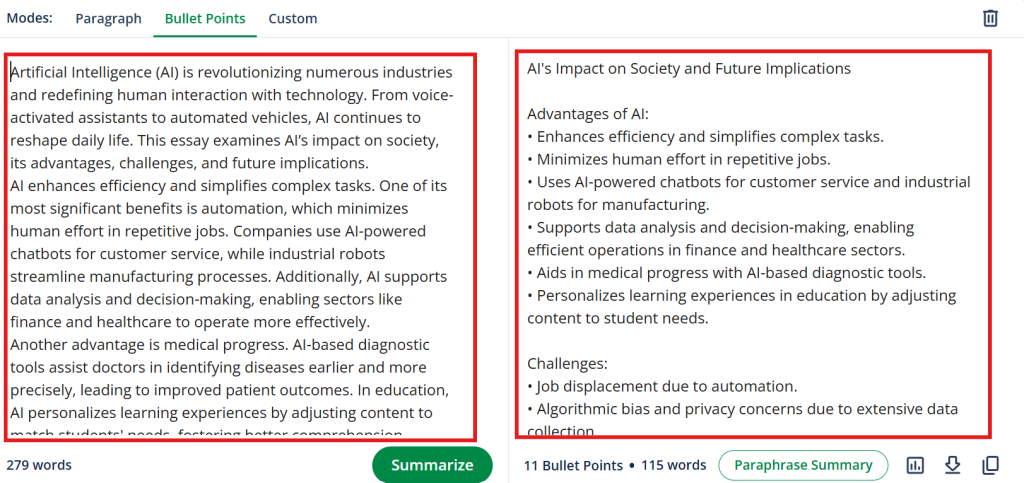
Now, if you are looking for the best tool for your paraphrasing task, GetGenie is your ultimate solution.
Why?
- Users can select the desired creativity level of the rewritten text or content.
- Users has a freedom to the number of results that allows you to choose the best output.
- GetGenie supports multiple languages.
- Work perfectly as WordPress plugin and a separate tool through its playground.
Here’s how GetGenie Content Rewriter works:
Select GetGenie Content Rewriter template and enter the content that needs to be rephrased. Select the language and set the creativity level and the number of result you want GetGenie to generate.

Click the “Write” button and wait for a couple of minutes.
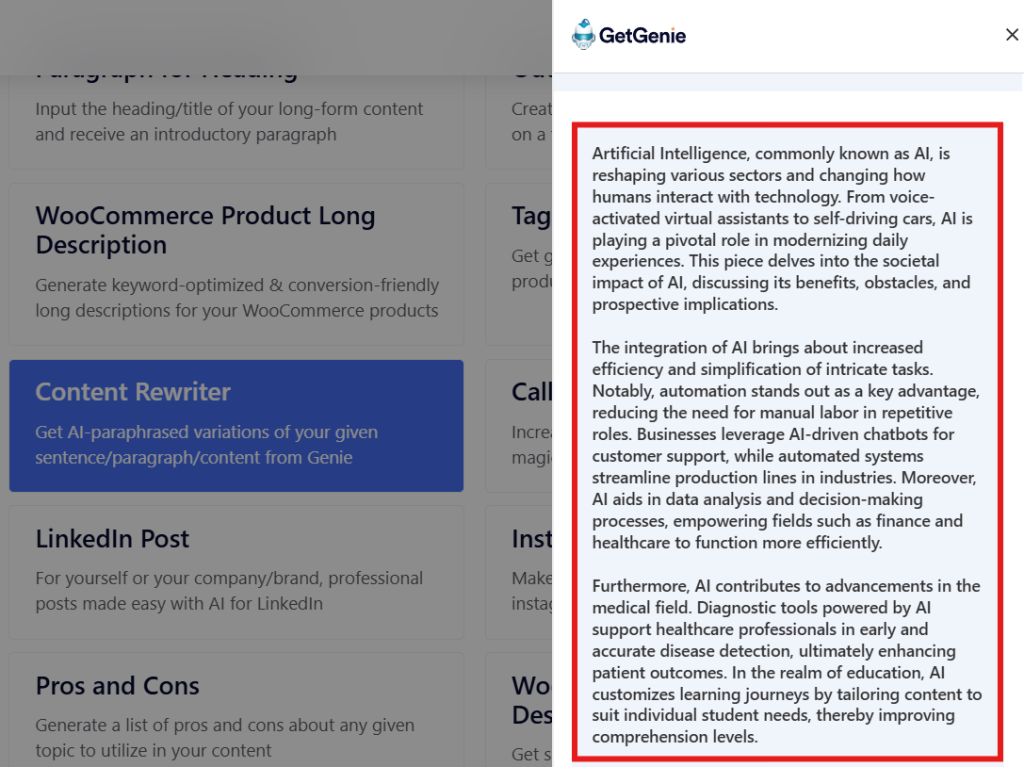
From Writer’s Block to Bliss: How AI is Increasing Writing Efficiency

Frequently Asked Questions
Final Words on Paraphrasing vs Summarizing
The difference between summarizing and paraphrasing lies in the length and information that’s included in each. I hope you have a clearer idea about summarizing vs paraphrasing. Whatever might the difference be, if you deal with content you will need to use both forms.
If you are looking for an efficient way to generate both paraphrasing and summarizing, you can get help from the AI-based content writer GetGenie. This WordPress AI plugin offers outstanding summarizing and paraphrasing templates that produce results within moments.
